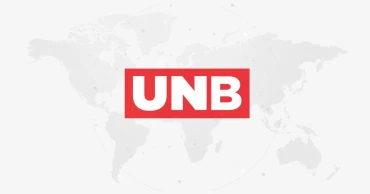Green energy
In Egypt, host of COP27, a small step toward green energy
From a distance, the endless landscape of solar panels stretching toward the horizon can easily be mistaken for crops nearing harvest. But here in the desert in southern Egypt, workers have been cultivating another precious commodity: electricity.
After the sun strikes the photovoltaic solar panels, a thermal charge generates electricity that runs to four government-owned power stations distributing power across Egypt's national grid.
It's part of the country's push to increase renewable energy production. With near-perpetual sunshine and windy Red Sea coastlines, experts say Egypt is well-positioned to go green.
Read more: COP27: Bangladesh wants developed countries to deliver on $100 billion promise
Yet it is also a developing country and like many others faces obstacles in making the switch. Much of its infrastructure depends on fossil fuels to power the nation of some 104 million people.
The solar panel farm — Egypt's flagship project named Benban, after a local village — puts it at the African continent's forefront when it comes to renewable energy. But questions remain over Egypt’s long-term green energy strategy, and whether there are enough incentives for the cash-strapped government to supply 42% of the country's electricity from renewable resources by 2035, as it has announced.
Karim el-Gendy, an expert at Chatham House who specializes in urban sustainability and climate policy, says Egypt has failed to meet its goal of having 20% of its electricity sourced from renewables by 2022. The current figure is now closer to 10%, according to according to the International Energy Agency.
There's less demand for solar energy, partly due to the influx of natural gas, thanks to new discoveries located in Egypt's section of the Mediterranean Sea.
“We have seen less interest in the past couple of years in integrated renewable energy projects in Egypt, both in terms of solar, in the south, and wind,” he said.
As host of this year’s global climate summit, known as COP27 and now underway in the Red Sea resort of Sharm el-Sheikh, Egypt has said it will pressure other nations to implement climate promises made at previous conferences. Egypt is not bound by any carbon emissions cap, but it has vowed to mitigate and curb its emission rises across key polluting sectors, such as electricity and transport.
Its use of natural gas has also helped, allowing Egypt to move away from burning coal and oil, much dirtier industries — but nevertheless, gas is still a fossil fuel.
The government has revealed few details on how it will implement or finance the 2035 vision. Foreign investment will likely play a big part, as countries in Europe look south for solar power. The European Bank for Reconstruction and Development has allotted $10 billion of funding for over 150 projects across Egypt, with Benban claimed as one of its major successes.
The sprawling farm is designed to grow as demand for solar energy increases.
‘‘It offers great potential for us and other investors,’’ said Faisal Eissa, general manager for Egypt at Lekela, a Dutch company that has invested in Benban.
Read more: COP27: Bangladesh prioritises realisation of green climate fund, Environment Minister tells UNB
Egypt’s New and Renewable Energy Authority claims Benban has already reduced the country's annual greenhouse emission output. But there is still a long way to go. In 2020, renewables accounted for 6% of Egypt’s energy consumption, according to the U.S. Energy Information Administration, with petroleum products accounting for 36% and natural gas for 57%. Coal accounted for just 1%.
Egypt may also have less of an incentive to invest in renewables as it grapples with domestic challenges, including an economic crisis brought on by the coronavirus pandemic, Russia's war in Ukraine and a years-long government crackdown on dissent. Last month, Cairo reached a preliminary deal with the International Monetary Fund that would allow access to a $3 billion loan.
Effects of climate change are already being felt in the Nile River Delta, where rising seas have brought on creeping salt that eats away roots and cakes farms, devastating the livelihoods of Egyptian farmers.
The Arab world’s most populous country accounts for only 0.6% of global carbon dioxide emissions. But it faces high levels of urban pollution. Most of the population lives in densely packed neighborhoods along the fertile banks of the Nile and its northern delta. Here, car fumes and mass transport running on diesel clog the streets. Egyptians’ exposure to air pollution is, on average, 13 times higher than the World Health Organization’s recommended guidelines. It was responsible for 90,559 premature deaths in 2019, according to statistics gathered by the United Nations.
The country's congested capital city of Cairo is the second top source of greenhouse gas emissions, after the giant offshore Zohr gas field, according to the Climate TRACE.
The remaining 90% of Egypt's land is uninhabitable desert. By better utilizing the vast expanse and coastlines, the Abu Dhabi-based International Renewable Energy Agency said the North African country could generate over half of its electricity from renewables by 2030.
It's a different way of viewing the country's sun-scorched landscape.
“People here have started to look at the sun as a source of power," said Ahmed Mustafa, who runs one of the area's many new logistics companies that work alongside Benban's developers and engineers, supplying them with equipment.
For the locals, the solar farm has been transformative. Thousands worked at the site when it was under construction, and many stayed as technicians and cleaners once it became fully functional.
Ultimately, the development of more wind and solar capabilities will come down to what makes business sense for the government, despite its expressions of good intent, according to el-Gendy.
‘’The need to expand its renewable sector all depends on Egypt’s commercial interests,’’ he said.
3 years ago
Green Economy in Bangladesh: Prospects and Challenges
The green economy is a new way of living that is based on sustainable consumption and production. In recent years, the concept of a green economy has been getting widely accepted in many countries. To make the green economy a reality in Bangladesh, there are some challenges that are needed to be addressed.
One challenge is the lack of access to clean energy, which makes it difficult for people to live sustainably. However, the Bangladeshi Government has already implemented sound policies that would help promote the green economy. Let’s focus on the problems and prospects of the green economy in Bangladesh.
What is the Green Economy?
The green economy is a term that refers to a way of living that is environmentally friendly and economically sustainable. It refers to practices and policies that promote green energy production, consumption, and waste reduction.
Green economy initiatives can be focused on a specific sector or area, such as renewable energy, transportation, agriculture, city planning, or manufacturing. The Green Economy has been growing in popularity since the term was used in a 1989 report by a group of leading environmental economists, which was made for the Government of the United Kingdom.
Read Renewable energy: 40% target ‘ambitious, but roadmap absent’
In 2008, the United Nations Environment Program started the Green Economy Initiative (GEI). The objective was to strengthen support for environment-friendly investments. One of the aims of the initiative was to increase support at the country level for global risk studies and influence policy-makers to implement green economy programs.
Prospects of Green Economy in Bangladesh
Generally, the financial sector of a country supports the economic growth of that country. So, if the activities of the financial industry are carried out with proper preparation and sincerity, the expansion of the green economy can be another development wonder in Bangladesh.
The population in Bangladesh is increasing day by day. And the use of technology in various stages of product production by various organizations is increasing to keep pace with the increased demand. Hence, the standard of cleanliness of the environment is decreasing.
Read Jashore waste treatment plant makes a big difference
These eventually increase the unexpected costs related to health, loss of biodiversity, carbon emissions, irreparable damage to the ecosystem, surface temperature, climate change, heavy rainfall, non-rainfall, cold currents, etc.
To cope with these issues, the development of a green economy can bring solutions as well as opportunities for exploration within a natural and healthy natural environment.
Green communication, green agriculture, green energy, green banking, green technology, green investment, green marketing, green industry, working environment, transportation, biogas, and geothermal energy all are directly related to a green economy.
Read UNGA chief calls for shift to green economies on Mother Earth Day
However, Bangladesh is not yet ready to apply all of these to improve the green economy. It is a costly and slow process. But the country has some prospects in some sectors such as using solar energy, recycling the used product, green agriculture and using biogas.
Bangladesh can increase the use of solar energy. With the proper use of endless light and heat from the sun, we can create an environment-friendly country in the coming days through various effective measures. Fossil fuel reserves are not infinite, and they will be finished.
But solar energy is derived from nature, a great gift of nature. Encouraging the principle of conservation of natural resources derived from nature ensures habitable earth for future generations.
Read What can COP27 do for climate vulnerable countries?
Moreover, renewable energy can be derived from ocean waves, water, and wind without any negative environmental impact. Thus, renewable energy generation, supply, and technological excellence will create jobs as well as create an environmentally friendly modern country. The growth and expansion of green employment depend on ensuring abundant use of renewable energy.
Converting the environment and destroying waste into incredible energy resources will be the wealth of our future by processing the remaining unnecessary part of daily used products.
Because excessive use of fertilizers and pesticides in unplanned agricultural management creates dire conditions. Therefore, the idea of green agriculture is the right decision for the coming future. Using green fertilizer and chemical-free fertilizer helps retain land fertility and increase fertility simultaneously with greater quantity on less land.
Read BGMEA seeks faster delivery of raw materials through green channel
Safe crop production is key. This system talks about all environmentally friendly production and production systems, including the use of organic fertilizers instead of chemical fertilizers, diversification of crops, and production of mixed crops. In this regard, encouraging the production and more use of biogas will lead the country toward risk-free environmental development.
Challenges of Green Economy in Bangladesh
The government has taken several important steps to take the green economy forward, which is very positive. But there are many challenges too.
Costly
Green factory installation costs can be up to 30% more than a conventional factory because pleasing production process, energy-efficient technology, water conservation technology, solar panel technology, inverter technology, and rainwater harvesting results in greater construction costs.
Read Bangladesh fails to exploit full potentials of green energy: Official documents
Moreover, industries need to utilize foreign consulting companies because of the absence of qualified professionals in the local area, which increases construction costs a lot. It, therefore, becomes quite hard to reach green economically.
Lack of Policy
Bangladesh has not issued a specific green industrial policy declaration. The high rates of corporate tax and value-added tax are also creating an obstacle to green industrialization, which also makes it challenging to import high-end machinery from abroad.
Lack of Awareness
Consumer behavior is additionally a tricky component in green industry development. The local consumers are poorly informed about the importance of going green. Demand for green products is from simply the western business world. As a result, only export-oriented enterprises are motivated to transition from green industries.
Read Davos climate focus: Can ‘going green’ mean oil and gas?
Other Challenges
Land scarcity, a high-interest cost of loans, insufficient transportation options, insufficient infrastructure for utility services, and other problems can be obstacles to the establishment of green industries in Bangladesh.
Taken Steps to Establish a Green Economy in Bangladesh
The Bangladesh government has already taken several steps to go green. The Government has already approved the 'Renewable Energy Authority Act' in 2012. Coastal green belt development activities have been undertaken. Also, adopted a five-year waiver on the commercial production of renewable energy.
The Bangladesh government has also taken steps to set up solar power and biogas plants. The Clean Development Mechanism (CDM) project was launched in 2013 to make organic compost fertilizer from municipal waste. To reduce air pollution from brick kilns, instructions have been given to convert old brick kilns to modern eco-friendly technology.
Read Bangladesh, Denmark sign document to strengthen partnership on green transition
Banks have now stopped lending to old brick kilns. A rapid expansion program has been undertaken to set up solar power and biogas plants. Environment courts have been set up in all districts. The government has already taken several steps to encourage farmers to use organic fertilizers. The country has already earned carbon credits by launching a project to produce bio-fertilizers from waste and use solar energy in some villages.
Bangladesh Bank has launched a refinancing program for entrepreneurs to produce green products. Between 2012 and 2016, Bangladesh Bank almost doubled its capital (from Tk 478 million to Tk 920 million) in refinancing green products. Sectors receiving the highest amount of loans under this initiative are—eco-friendly brick kilns, renewable energy, and liquid waste management.
Moreover, Bangladesh Bank has prepared environmental and social risk management policies. Through this policy, green financing initiatives have been taken. The organization is also working on identifying the risks of financing entrepreneurs involved in the production of toxic carbon monoxide and turning them green.
Read RMG: BGMEA, Jeanologia to collaborate on promoting green technologies
Final Words
Both economic growth and environmental conservation are essential for a country. There is no other way to establish a green economy in Bangladesh to make it suitable for living with development. As we are one of the most vulnerable countries to climate change and the environment, it is important to quickly solve the problems by implementing a green economy. Because sustainable development is not possible without a green economy.
3 years ago
TEI GET to promote renewable energy in Bangladesh
Team Europe Initiative on Green Energy Transition (TEI GET) will promote renewable energy in Bangladesh in achieving its national goal.
The TEI GET expressed such interest while a delegation of the organisation made a field visit to 3 renewable energy projects in Dhamrai area of Dhaka on Tuesday.
According to a release, representatives off Germany and the European Union, as TEI GET Co-Chairs, along with high-level representatives of Denmark, Sweden, AFD, GIZ, KFW, Switzerland were present.
Read Akij sets up rooftop solar plant with Huawei's technology
Additional Secretary of Renewable Energy, Power Division of Bangladesh Md Mostafa Kamal,, Additional Secretary and Member Admin, Sustainable and Renewable Energy Development Authority (SREDA) Md Golam Mostofa were also present.
The field visit, organized together with IDCOL, started with a guided tour of the operational rooftop solar with Net Metering system at Snowtex Outerwear Ltd. at Dhamrai, Savar, following a discussion meeting with TEI GET, IDCOL, Snowtex Management and Government counterparts.
Later, the group visited an IDCOL project, co-financed by KFW, of Solar Irrigation Pumps, and a domestic biogas plant in Dhamrai.
Read: 25% electricity from renewables by 2030: SREDA proposes, GOB disposes?
During the visit’s discussion, Johannes Schneider, Head of Development Cooperation, Germany, highlighted EU Member States’ common interest to support Bangladesh in achieving their national goals and international commitments in the field of renewable energy through the Team Europe Initiative
“This Initiative will allow us to better coordinate and consolidate our engagement in the Green Energy Sector and strengthen our relationship with the Bangladesh Government and the private sector,” he said.
Maurizio Cian, Head of Cooperation, EU Delegation, highlighted the transformational approach of Team Europe said that the Team Europe’s common values and expertise in Renewable Energy are key drivers of this initiative.
Read Bangladesh seeks IRENA’s support to explore renewable energy potential
“Team Europe provides the framework to deliver European support to the Government of Bangladesh, with the ambition of a transformational impact in accelerating a green and just energy transition,” he added.
Mostafa Kamal, Additional Secretary of Power Division, said that Bangladesh is committed to increase renewable energy contribution in the national power generation mix, to promote appropriate, efficient and environment friendly technology for the development of renewable energy.
“We are looking forward to implementing our strategies in collaboration with Team Europe,” he said.
Read: Renewable energy could be Bangladesh’s best option post Covid-19
TEI GET, launched in Dhaka in June 2021, aims at supporting Bangladesh to build a power system that leads to maximum coverage of the country`s energy demand through renewable energy while reducing GHG emissions, energy consumption and demand through energy efficiency.
TEI GET, co-chaired by Germany and the EU includes EU Member States Denmark, France, Italy, Spain, Sweden, The Netherlands, the European Investment Bank (EIB) and like-minded countries like Norway and Switzerland.
TEI GET comprises projects in the area of effective sustainable energy market, optimized grid infrastructure and renewable energy integration into the grid, it added.
Read Govt aims for 10% electricity from renewables by 2025
3 years ago
Bangladesh fails to exploit full potentials of green energy: Official documents
Though the production cost of renewable energy, especially the solar power, had substantially dropped in recent years, its share in the country’s power generation saw no jump.
The dismal picture was painted in the documents of the state-owned Bangladesh Power Development Board (BPDB).
According to the papers the country’s grid-connected renewable energy’s in the total power generation still persists below one per cent.
Only recently it went up to 0.36 per cent per unit in the FY2021-22 from a level of 0.09 per cent per unit in FY2019-20, revealed the documents recently placed during the public hearing of the Bangladesh Energy Regulatory Commission (BERC).
The official documents also manifested that the government continued its focus on the promotion of fossil fuel, especially for costly power generation from rental and quick rental power plants to offset its rising annual financial loss.
The BPDB, meanwhile, proposed to raise the per unit electricity tariff by 65.56 per cent from the existing rate of Tk 5.17 arguing that it faces a loss of Tk 30,251 crore in revenue unless the sails through.
However, a technical evaluation team (TET) of the BERC) recommended a price hike by 57.83 per cent. The commission of the BERC has not yet made its final decision.
The BPDB documents showed the government had to spend an average Tk 43.42 to per unit to generate electricity from Diesel-fired plants, followed by Tk 15.51 per unit from Furnace oil-fired plants, Tk 12.77 from coal-fired power plants, Tk 12.64 per unit from renewable energy (solar) plants, Tk 3.46 from gas-fired power plants and Tk 2.67 per unit from hydro plants and Tk 5.95 from imported power in the fiscal year 2021-22 (upto March).
READ: Prepare road map to raise green energy use to 40% by 2041: Info Minister
It generated highest 56.43 per cent electricity from gas-fired plants, 26.49 per cent electricity from furnace-oil fired plants, 5.75 per cent electricity from coal-fired plants, 0.92 per cent electricity from diesel-fired plants, 1.03 per cent electricity from hydro plants, 9.02 per cent electricity from import while only 0.36 per cent electricity from renewable sources.
The most important feature is that the cost of electricity from solar is much lower at Tk 12.68 per unit while power generation cost from diesel is highest at Tk 43.42 per unit and Tk 15.51 per unit from furnace oil-fired plants.
Despite such a huge potential for power generation from renewable energy due to its substantial reduction in cost, the power did not focus on green energy.
The Transparency International Bangladesh (TIB) in a recent study on corruption in the power sector claimed the cost of power generation from renewable sources has dropped by 89 per cent.
It said the country is capable of generating 30,000 MW of electricity from renewable sources while the government set a target to generate 2,800 MW by 2021. The current generation from renewable sources is only 779 MW.
About slow deployment of renewable energy promotion, senior vice president of Bangladesh Sustainable and Renewable Energy Association (BSREA) Munawar Moin said lack of proper policy support with a budget has been the main problem in development of the sector.
At the moment the only possible deployment is “Rooftop Solar” with Net Meter. However, an appropriate financing option with fiscal incentives may play a vital role for rapid deployment by industry owners.
“In addition, a target-specific plan with budget allocation should be adopted for scaling up the renewable energy deployment." he added.
State Minister for Power, Energy and Mineral Resources Nasrul Hamid said the government has set a target to generate 40 per cent of electricity from renewable sources by 2041.
“To achieve the goal the government has taken various steps including net metering and other policy guidelines”, he said in his recent address to a webinar.
He said Bangladesh needs innovative technology alongside the foreign financial and technical support to overcome its main bottleneck of land scarcity in development of the green energy sector.
3 years ago
India to export $500bn green energy by 2042, Ambani says
India is projected to export an estimated $500 billion worth of green energy by 2042, Bloomberg reported, citing chairman of Reliance Industries, Mukesh Ambani, reports ARAB NEWS.
“India will emerge as a global new energy leader,” Bloomberg reported, citing Ambani.
The technicalities on how this will be achieved is yet to be disclosed.
Read: Learning from Covid, Modi govt plans big AI push for disease surveillance across India
However, the South Asian country is dependent on businessmen such as Ambani to help it achieve net zero by 2070.
Ambani’s multinational conglomerate, Reliance Industries Ltd., plans to invest a total of $76 billion in clean energy projects over the coming years.
“For the next two to three decades, India’s dependence on coal and imported oil will continue, but we must have a plan to eliminate that,” Ambani said.
Read: Ukraine seeks Indian intervention in ending Russian offensive
Accordingly, Reliance Industries is repurposing one of its plants to generate blue hydrogen at $1.2 to $1.5 per kilogram.
3 years ago
Bangladesh bets big on wind energy to curb climate change
Bangladesh aims to significantly expand renewable energy sources in its total energy mix in its relentless pursuit of a net-zero carbon footprint.
As one of the key steps in this regard, the Sustainable and Renewable Energy Development Authority (Sreda) has set a target of generating 5,000 MW of onshore and offshore wind power by 2030.
Wind energy is power obtained from the force of wind using turbines. The country currently generates only 2.9 MW of wind power.
Read Bangladesh going for green energy to mitigate climate change impact: Minister
According to Sreda officials, the huge target is being considered as an immediate option for the next few years in compliance with the government’s commitment to promoting renewable energy -- given the fact that an American agency recently pegged the country’s wind power generation potential at 30,000 MW.
The US Department of Energy’s National Renewable Energy Laboratory (NERL) conducted a study -- Assessing the Wind Energy Potential in Bangladesh: Enabling Wind Energy Development with Data Products -- from June 2014 to December 2017.
The United States Agency for International Development (USAID)-funded study concluded with the observation that “preliminary results demonstrate that, for wind speeds of 5.75–7.75 metre per second (m/s), there are more than 20,000 square kilometres of land with a gross wind potential of over 30,000 MW”.
READ: Wind energy vision: Contracts for Chandpur, Inani projects likely soon
About the wind power potentials, Sreda chairman Mohammad Alauddin said the organisation will now conduct a detailed study on the basis of the NREL’s findings to get the bankable data "so that potential investors can invest in the sector and make their investment commercially viable".
"A proposal on wind power's potential will be placed before the Power, Energy and Mineral Resources Ministry to incorporate the target in the proposed Integrated Energy and Power Master Plan (IEPMP) up to 2030, now being framed with the help of Japan International Cooperation Agency (JICA)," he told UNB.
The NREL study said, “Although this estimate is not realistic, when proper filters are applied to screen out undesirable land for wind development, it suggests that Bangladesh's 10% renewable target by 2021 is achievable”.
Read Policy support instrumental for renewable energy development: Experts
“The preliminary technical potential analysis calculates gross potential and does not filter out already-developed land, environmentally sensitive land, or land unsuitable for other reasons," it added.
The NERL study found the wind potentials at nine locations across the country, having an average wind speed of 5-6 metre per second at a height of over 60-80 metre above ground level (AGL) -- Lalpur of Natore in Rajshahi, Chandpur, Sitakunda and Parkay Beach in Chattogram, Gouripur in Mymensingh, Madhupur Tea Estate in Habigonj, Dacop in Khulna near Mongla port, Inani Beach in Cox's Bazar, and Badarganj in Rangpur.
Of these, initiatives have already been taken to set up wind power plants at three places -- at Dacop, Inani Beach and Chandpur, each having 50 MW capacity. A contract has already been awarded for the Dacop location.
Read India At COP26 Says Its Solar Energy Capacity Increased 17 Times In 7 Years
"Exploiting the new and efficient technology, we're now planning to set up a good number of wind power plants by 2030," Alauddin said, referring to the NREL study that found the wind speed at six metres per second at a higher hub height.
Energy experts, however, are skeptical about the country's wind power's potential and it's commercial viability.
Eminent energy expert Dr M Tamim said that the proposal for generating 5,000 MW of power from wind is "not only highly ambitious, but highly subjective as well".
READ: Bangladesh’s future focus may be on nuclear energy use: Dr Tawfiq
"Which technology will be used, where it will be used and what will be the cost of electricity and who will be the investors in such projects... these are big questions," said the Professor of Petroleum and Mineral Resources Engineering at BUET.
Sreda statistics show that the country currently generates a total 777.24 MW of electricity from different renewable sources.
Of this, 543.25 MW is generated from solar energy, 2.9 MW from wind, 230 MW from hydro, 0.69 MW from biogas, and 0.4 MW from biomass, while the country’s total power generation capacity is about 25,000 MW.
Read _Bangladesh’s two dream projects face speed bumps
Shariar Ahmed Chowdhury, a professor at United International University, said that wind energy is very sensitive. "If data lacks 10% accuracy, it has a big impact and there may be a variation of 30-40% in the final output," he said.
3 years ago
Renewable energy: 40% target ‘ambitious, but roadmap absent’
Bangladesh has set a goal of generating 40 per cent of electricity from renewable sources in the next 20 years, but a roadmap on how to reach that lofty target is absent.
The government has adopted a mega plan on power: to boost electricity production to 60,000 MW by 2041 with renewable energy’s share rising to 24,000 MW, which now stands at 700 MW.
Energy experts and stakeholders in the green energy sector believe a comprehensive and inclusive roadmap is necessary to reach the target of 24,000 MW of electricity from renewable sources in the next 20 years.
Read Bangladesh’s single largest rooftop solar power plant inaugurated in Korean EPZ
State Minister for Power, Energy and Mineral Resources Nasrul Hamid unveiled the government’s latest vision on renewable energy during a Bangladesh-UK Climate Partnership Roundtable on June 2 in the city.
President of COP26 Alok Sharma, Foreign Minister AK Abdul Momen, and Environment, Forest and Climate Change Minister Shahabuddin Uddin were present at the function.
Earlier, Bangladesh had set a plan to generate 10 per cent of electricity from renewable sources by 2020. But it could raise it nearly 3 per cent only.
Also read: Renewable energy could be Bangladesh’s best option post Covid-19
Data available from the Sustainable and Renewable Energy Development Authority (Sreda) shows the country now generates 730 MW from renewable sources, including solar, wind and hydro.
About the new target, Nasrul said he is confident of achieving the goal as the government is determined to do this as part of its commitment to the Climate Vulnerable Forum (CVF) where Bangladesh is the chair.
“We’ve already awarded a good number of contracts in public and private sectors for renewable energy plants which will cover 15 per cent while the country is trying to import hydro electricity from Nepal and Bhutan,” he said.
Read EGCB signs MoU with Marubeni to build 100 MW solar plant in Sonagazi
“A deal is ready to be signed with Nepal for importing 700 MW hydro power from Nepal while negotiations are on with Bhutan to import hydro power from the Himalayan nation,” he claimed, adding that if such moves become successful it would hugely boost the country’s renewable energy generation.
Nasrul thinks the technologies on green energy are changing so fast that no long-term plan should be followed.
“Instead, the country should work out a short-term plan for two or five years as a dynamic one to adopt new technologies,” he told UNB.
Read Solar power plant in Manikganj starts commercial operation
Nasrul said the new target will be aligned with the next Power System Master Plan (PSMP).
4 years ago
Solar Home System: IDCOL partners seek govt intervention in loan write-off issue
Five largest partner organisations (POs) of state-owned IDCOL, who played a vital role in expanding the solar home system (SHS), are now seeking the government’s intervention to resolve the loan write-off issue.
Otherwise, they say, they will be deprived of the benefit and face huge losses.
Official sources said IDCOL recently forwarded a proposal to the Bangladesh Bank seeking a write-off approval of Tk 306.41 crore default loans for its 39 POs. Its 44 POs have about Tk 1,400 crore in default loans.
Also read: Is solar power the solution to Bangladesh's growing energy ...
They said these loans, provided by IDCOL, became default because of the government’s fast grid power expansion programme.
“Grid electricity expanded to the off-grid areas that discouraged SHS consumers to pay back the loans they received from POs. Such unpaid loans finally made the POs defaulters in paying back the IDCOL,” said a top official of a firm involved in the renewable energy programme.
IDCOL had distributed the loan after receiving funds from different donor agencies, including the World Bank.
Read Govt rooftops can generate 2,000 MW of solar power, say experts
According to World Bank’s latest data, an estimated $1,094.93 million was invested in the HSH project to provide electricity to about 20 million people — which means about $266 per household.
Of the investment, 63 percent came from the World Bank, 14 percent from the Asian Development Bank and 12 percent from the Japan International Cooperation Agency.
The entire fund was distributed by IDCOL as a soft loan which resulted in saving Bangladesh $1,852 million while providing clean energy since 2003, says a recent World Bank survey.
Also read: Rooftop solar power: 'Net metering can ensure cheaper ...
It said the project helped households gain $745 million, partner organisations $310 million and the IDCOL $379 million while the government's net benefit was $474 million, said the donor agency.
Solar industry insiders said the SHS programme was launched by IDCOL in 2003. In the last 18 years, over 5.5 million solar home systems were installed.
They said that there was a tripartite partnership to the financial model under which IDCOL provided about 70 percent of the total cost of installing the SHS as soft loans to the POs, while the remaining 30 percent was invested by the POs and the customers themselves.
Read Green energy's share of power generation lagging far behind conventional sources
4 years ago
Nasrul urges RMG owners: Go solar for low cost, tax break
State Minister for Power, Energy and Mineral Resources Nasrul Hamid has urged the country’s garment industry owners to set up rooftop solar system under net metering policy to take advantage of green energy.
“If you set up solar power plant for your own consumption using your industry rooftop, it could be a good investment which not only reduces your power bill, but also benefits you to get a credit of green industry”, he told industry owners while addressing a virtual workshop on Tuesday.
Also read: Rooftop solar: Power companies instructed to float net metering promotion plan
Sustainable and Renewable Energy Development Authority (Sreda) organized the workshop titled: “Scaling Up Net Metered Rooftop Solar on Knitwear Industry” with its chairman Mohammad Alauddin in the chair.
The workshop was also addressed by Bangladesh Knitwear Manufacturers and Exporters Association (BKMEA) vice president Mohammad Hatem, Bangladesh Energy and Power Research Council (BEPRC) chairman Zakia Sultana.
Also read: Rooftop solar power: ‘Net metering can ensure cheaper electricity for garment factories’
The government introduced net metering policy under which a consumer can sell his unconsumed or additional electricity generated from rooftop solar to the national grid.
The State Minister said that use of efficient technology and green energy will help promote sustainable growth the industry.
Also read: Green energy in Bangladesh: Govt moves to save solar mini-grids
“It will help our appeal industries compete to the global market at lower production cost”, he said.
Nasrul Hamid said the government has initiated a move to reach electricity to off-grid areas through solar home system, mini-solar power grid and submarine cables.
Also read: Govt rooftops can generate 2,000 MW of solar power, say experts
He said the government set a target to generate 10 percent of electricity from renewable energy sources.
To achieve this target, he said, the government has taken different steps including a net metering system to promote the use of rooftop solar power.
4 years ago
Move for setting up national renewable energy lab
A renewable energy lab is going to be established in the country to promote research on green energy.
4 years ago
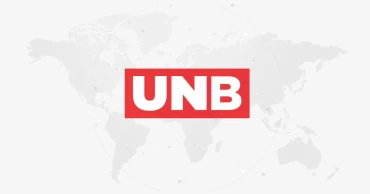
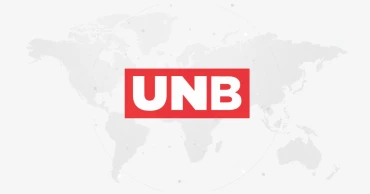
.jpg)


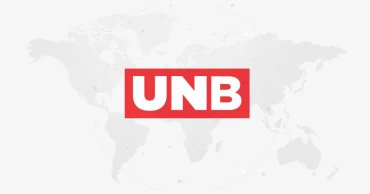
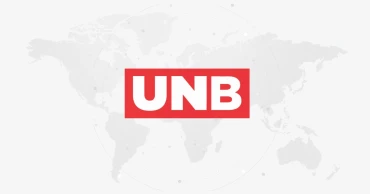
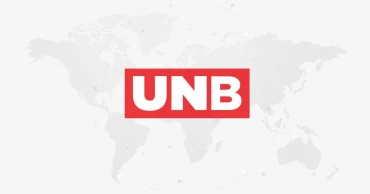
.jpg)
